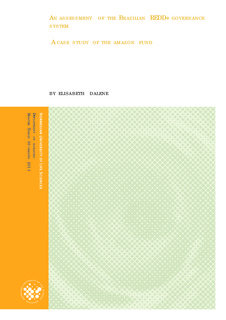| dc.description.abstract | REDD+ has become a hot issue in the climate change policy. It is seen as one way to reduce global GHG emissions by slowing and potentially reversing deforestation and forest degradation. The Amazon Fund is today seen as the only full REDD+ governance structure in the world. Thus, I was interested in doing a deeper study of this governance structure in order to learn about the strengths and weaknesses of the Fund as a REDD+ governance structure. In order to answer this objective four research questions have been made. The method used in order to answer this objective has been qualitative. It is based on written material about the Fund and its activities and a series of independent interviews with people engaged in the REDD+ process in Brazil.
I found that there are both important strengths and important weaknesses in the Brazilian REDD+ governance system. The overall political legitimacy of the system is argued to be an advantage. The steering committee is an important part of this. However, lack of transparency lower the political legitimacy. Another advantage with this system is the well-known and experienced monitoring system of deforestation, by the national institute of space research, and which is also used in the Fund’s monitoring, reporting and verification system. A third advantage is that the Fund seems to be well integrated into the overall national deforestation policy. However, there are also weaknesses regarding the Fund in relation to the national deforestation policy. The Fund is small in size and does not seem to focus on the critical drivers of deforestation. The governance system does not include reduction of emissions from degradation, and other biomes should also be taken more into consideration. The system of money flow in the Amazon Fund can also be seen as a weakness. One system decides whether and how much money should be donated to the Fund. The other is the money to the projects. This system however, depends on the input to the Fund rather than on the performance of the project. BNDES follows its own routines for loan activities when they approve donation activities. This has affected the type of projects that are being approved. Additionality of projects approved does not seem to have a focus in the Fund.
To conclude, this governance system has some advantages. However, in order for this system to continue to be used as the national REDD+ governance system, there are different things that should be improved. Some weaknesses may be easier to deal with than others. Adding measure of reduction of emissions from degradation may be easier to do than changing the habits of BNDES, as the change of BNDES’ habits is likely to be a slow process. | en_US |
